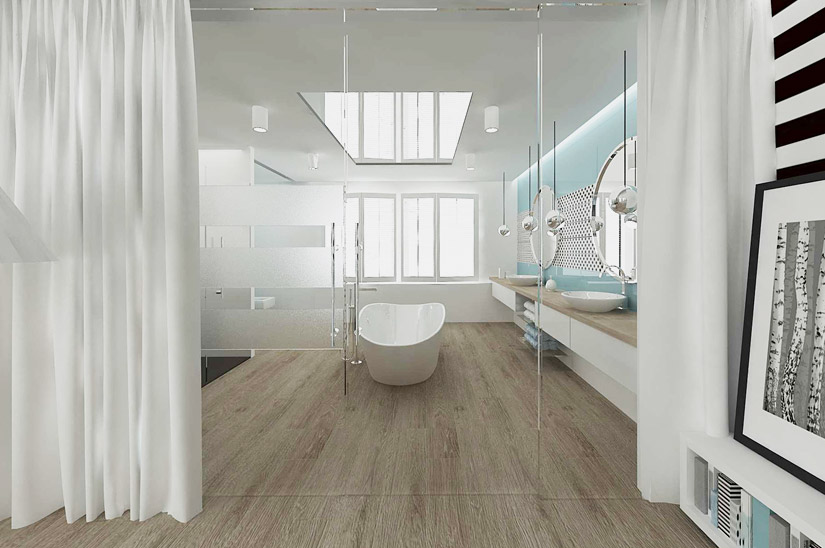Glass tempering involves heating glass panels to approximately 700 degrees Celsius and cooling them with cold air. The process yields a type of safety glass.

Tempered glass has very hard outer surfaces and a "soft" core. The tensions that result from this cause the glass to disintegrate into small fragments with dull edges when broken. Tempered glass is manufactured in accordance with EN 12150-2, which allows us to affix the CE marking to our products.
Tempering can be applied to float glass, tinted glass, coated glass and decorative glass, making them more durable and impact-resistant. Not only is such glass stronger mechanically, but it will also endure more thermal stress caused by surface temperature changes.

Tempered glass has found use in furniture, glass doors, stationary and movable glass partitions, facades, shower booths and household appliances. In order to make it look remarkable, glass can be painted before tempering.
